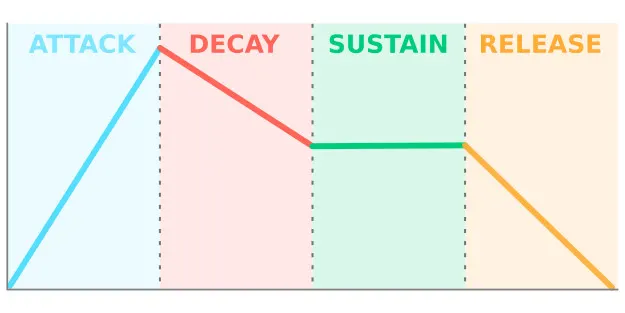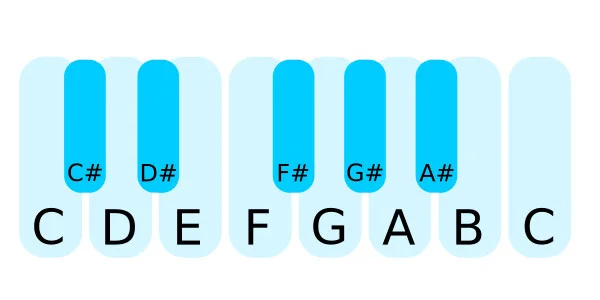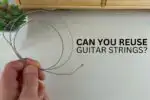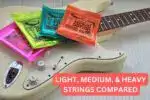Take a look at any synthesizer and, more often than not, you’ll see that they come with a keyboard with black and white piano-style keys.
If you’re a beginner synth player, this may leave you wondering whether you need to learn the piano to play a synthesizer.
You do not need to know how to play piano to play a synthesizer. If your synthesizer has a piano-style keyboard then it is useful to know which keys play which note, as well as basic scales, but synthesizers are more about sound design so knowing how to programme them is more essential.
Why you don’t need to know how to play piano to play a synth
At a first glance, it’s easy to assume that piano skills are needed to play a synthesizer, but that’s not true.
Firstly, piano is its own instrument with its own playing style. Piano playing requires coordination between the left and right hands, commonly with the left hand playing basslines and the right hand playing the melodies.
Synthesizers can be played like this if they’re polyphonic, but piano and synthesizers are completely different things.
Think about this: imagine playing a song one note at a time on a piano. It would sound pretty boring, right?
Compare this to a monophonic synth, which can only play one note at a time but can produce a wide variety of sounds, the tune played would sound a lot more interesting because of the synth’s timbre.
This is the fundamental difference between synthesizers and piano’s. Synthesizers are first and foremost about sound design.
The keyboard on a synth is just the means to an end of triggering a sound. You could plug in a MIDI guitar controller and get the exact same results.
What’s more is that most synths can also be programmed to play sequences. This means that you can tell a synth what to play, without having to physically play it yourself.
So, now we know that learning a piano isn’t an essential skill for playing a synth, let’s look at what you do need to know to play synth.
What you need to know to play a synth
Playing a synthesizer is a skill in its own right. It’s less about the physical playing, and more focussed on the principles of sound design. To play a synthesizer, you will need to know:
- How to programme a synth
- The layout of a keyboard
How to programme a synth
Setting up your synth to get the right sound for you is a simple process once you understand the components of a synthesizer, and what they do.
To programme a synth, you’ll need to know about the main components that produce and shape the sound. These are:
- Oscillators
- Filters
- Low Frequency Oscillator (LFO)
- Envelope Generator (EG)
- Voices
Oscillators
Like the plucking of a guitar string, oscillators are the primary source of sound in a synthesizer. They are the components that generate a waveform at a certain frequency. For example, if you press middle C on your synth keyboard, the oscillator will produce a frequency of 260Hz, giving you the tone of a middle C.
Common waveforms generated by an oscillator are a sine wave, sawtooth wave, square wave, and a triangle wave.
Most synthesizers have the ability to use more than one oscillator to generate a sound. This is to create a thicker texture, as the frequencies are stacked on top of each other.
Typically, monophonic synthesizers tend to have 2 or more oscillators, whereas polyphonic synthesizers tend to use either 1 or 2 oscillators.
You may see oscillators referred to as Voltage Controlled Oscillators (VCO) in analog synthesizers, or Digitally Controlled Oscillators (DCO) in digital synthesizers.
Filters
Filters remove certain frequencies from the waveform(s) to change the timbre of the sound.
Most common are low pass filters, which removes higher frequencies. For example, imagine being outside a noisy nightclub: it’s all the low end frequencies that you can hear. The high end frequencies have been filtered out. Likewise, you can also get high pass filters that remove lower frequencies.
The more of a filter you used, the more frequencies are filtered out.
These are used to create different tones. For example, when creating a pad, you may want to filter out the higher frequencies so that the synth is less obvious in the mix.
Filters are often referenced alongside dB unit or a number of “poles”. These both measure how steep the filter is. A steeper filter will reduce the frequencies more per octave than a shallow filter.
The 2 most common types of synth filter are:
- 12dB / 2 Pole: Reduces the frequencies outside the filter by -12db per octave.
- 24dB / 4 Pole: Reduces the frequencies outside the filter by -24db per octave
Generally speaking, a 12dB filter will have a subtler effect than a 24dB filter, as the frequencies outside the filter will be reduced less.
“Resonance” or “Peak” is another term that you’ll see alongside a filter. This is a tool that increases the frequencies at the filter cut off point, which can be used to create iconic tones such as “acid bass”.
Low Frequency Oscillator (LFO)
Most synths also include a Low Frequency Oscillator (LFO). This is an oscillator that has a very low wave cycle, usually below audible range of 20Hz, and is used to create movement.
The LFO can usually be applied to different parameters of a synth. For example, an LFO could be applied to a filter to make it open and close slowly. Likewise, it could be applied to the master volume to make the synth louder and quieter.
Envelope Generator (EG)
Much like a letter envelope, a synths envelope determine how the sound is packaged and delivered to.
Most synths use the following parameters to determine the synth envelope: Attack, Decay, Sustain, and Release.

The envelope is most often applied to the master amplifier, which determines the overall volume. Here’s how the different settings would effect the sound produced on the master amplifier.
- Attack: This means the time taken to make the sound. A lower setting means the sound reaches its maximum volume quicker, a higher setting means that the sound will take longer to reach its max volume.
- Decay: This means how quickly the sound declines in volume. A lower setting means the sound declines in volume quicker, a higher setting means that it takes longer.
- Sustain: This is the level of the sound the decay will decline to. Whilst the other settings measure time, this setting measures level. A lower setting means a quieter volume, a higher setting means a higher volume.
- Release: This is the time taken from the sound to reach silence once the key is released. A lower setting means a quicker decline in volume, a higher setting means it takes longer for your sound to reach silence.
Understanding the layout of a keyboard
Whilst you don’t need to know how to play piano to play a synth, it’s important to know which key plays which note, if your synth has a keyboard.
I’ve created the below image to help you identify the keys on a synth keyboard. The vast majority of synthesizers start on the note “C”.

From here, I’d suggest learning some basic piano scales to help you learn how to build and compose songs!
Check out my latest articles
Take a look at the top of your guitar and you’ll see a thin strip…
Can You Reuse Guitar Strings (and Should You?)
Have you snapped a string on your favorite guitar? Perhaps you’ve accidentally mixed up the…
Light vs Medium vs Heavy Guitar Strings Compared
Light, medium, and heavy are all terms that guitarists use to describe the relative thickness…

Conor is a music producer, multi-instrumentalist, and all-round enthusiast from the UK with over 15 years of experience. He’s the founder and sole-content creator for the roundtable audio blog and YouTube channel.



